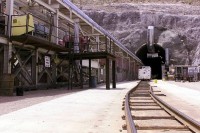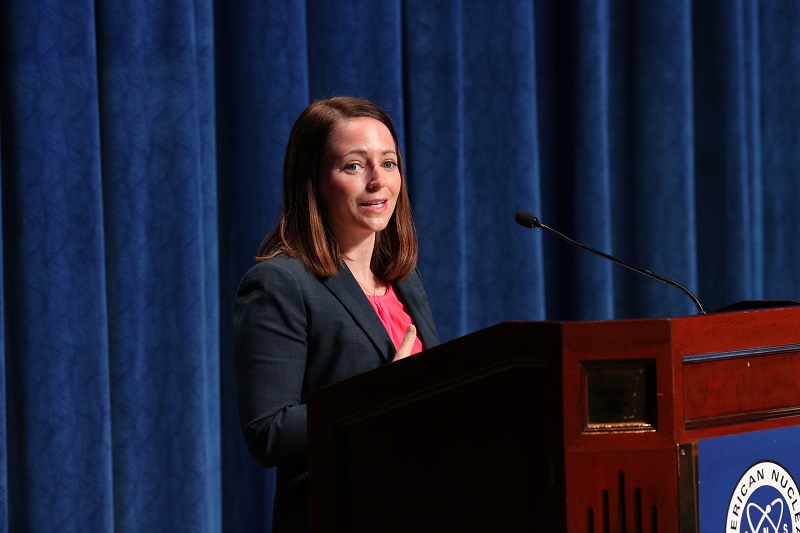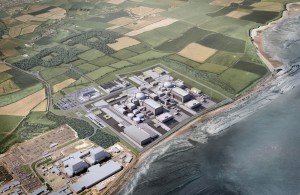Strong Industry Response to EPA Clean Power Plan
by Jim Hopf
Your most critical assets deserve more than just fences and cameras. NV5’s cutting-edge layered security solutions extend detection and response beyond traditional perimeters. From advanced geospatial analytics to integrated surveillance and access control, NV5 helps you stay ahead of threats before they breach your defenses. Learn more.
by Jim Hopf
On Saturday, December 13, there weren't balloons or cake but a plume of water vapor indicated that operations continued as Energy Northwest employees commemorated 30 years of Columbia Generating Station's commercial operation.
The continued introduction of renewables onto the electric grid in the United States is ensuring that discussion of whether or not these assets can be integrated with existing or expected designs of other sources continues. In this discussion, nuclear energy is often wrongly described as "on or off"-but in fact, nuclear plants can and do load follow (respond to changing system demands) although it's a matter of both design and owner utilization-with a focus on economics-that determines if or when any actually do.
PBS television is premiering on December 9 the documentary "Rickover: The Birth of Nuclear Power" at 7 pm Central time. (Please check TV listings for scheduled viewing times in your area. Not all PBS stations will air the documentary on December 9.)
On November 28, 2014, "Block 3" (or the third unit) at the massive Zaporizhia Nuclear Generating Station in Ukraine experienced a fault in electrical transmission equipment outside the nuclear portion of the plant itself. This fault essentially caused the 1000-MW rated nuclear plant to have nowhere to send that large amount of power it was generating, per its design. The nuclear plant tripped off its turbine generator (opening its output breakers) and scrammed the reactor. In the world of power generating equipment anywhere, no matter the power source, this type of event is fairly common. This scenario is possible when severe storms play havoc with the grid during intense lightning.
On November 5, the day before a scheduled quarterly conference call with investors and analysts, Babcock & Wilcox (NYSE:BWC) announced that it was splitting into two separate publicly traded companies.
 It's time for the 237th Nuclear Energy Blog Carnival, and this time it's right here at the ANS Nuclear Cafe. Because of the Thanksgiving holiday week, the contributions are slightly reduced in number compared with the usual, but what there is packs a punch. Let's get to it!
It's time for the 237th Nuclear Energy Blog Carnival, and this time it's right here at the ANS Nuclear Cafe. Because of the Thanksgiving holiday week, the contributions are slightly reduced in number compared with the usual, but what there is packs a punch. Let's get to it!
 Last month, the Nuclear Regulatory Commission finally released Volume 3 of the Safety Evaluation Report (SER) for the Yucca Mountain nuclear waste repository. This volume covers the post-closure evaluation of the repository, and includes all of the analyses that show that the repository will meet the stringent waste material containment requirements over the evaluated one million year period. Other volumes, which cover other areas of repository design (e.g., surface facilities, etc..), have yet to be released.
Last month, the Nuclear Regulatory Commission finally released Volume 3 of the Safety Evaluation Report (SER) for the Yucca Mountain nuclear waste repository. This volume covers the post-closure evaluation of the repository, and includes all of the analyses that show that the repository will meet the stringent waste material containment requirements over the evaluated one million year period. Other volumes, which cover other areas of repository design (e.g., surface facilities, etc..), have yet to be released.
by Nicholas Thompson
I have generally been quite a skeptic about thorium as a source of nuclear fuel. Although I know that thorium was tried in the fuel at two very early commercial power reactors in the United States (Elk River, and Indian Point-1), the idea did not take off. The proposals to use thorium in fluid fuel reactors were far less successful, with none moving beyond the prototype stage. Even given the low success rate, it still remains that the use of thorium is promising.
This column was initially published in the October 16, 2014, issue of Fuel Cycle Week and is republished here with permission.

Jessica Lovering speaks at ANS 2014 Winter Meeting
Breakout sessions with three acknowledged experts in the areas of nuclear policy, nuclear plant operations, and nuclear regulation were the highlight of an innovative and engaging Opening Plenary at this year's ANS Winter Meeting
American Nuclear Society President Michaele Brady Raap has released a letter calling ANS members to action-and by "action," she means making comments to the Environmental Protection Agency on its Clean Power Rule. According to Brady Raap, "the rule as it is currently structured would almost entirely discount the clean energy contributions of our current nuclear energy facilities and effectively penalize states that have new plants under construction."
 The 233rd Nuclear Energy Blog Carnival has been posted at Next Big Future.
The 233rd Nuclear Energy Blog Carnival has been posted at Next Big Future.

Hinkley Point C - conceptual view. ©EDF
by Jim Hopf
 The 232nd Nuclear Energy Blog Carnival has been posted at The Hiroshima Syndrome.
The 232nd Nuclear Energy Blog Carnival has been posted at The Hiroshima Syndrome.